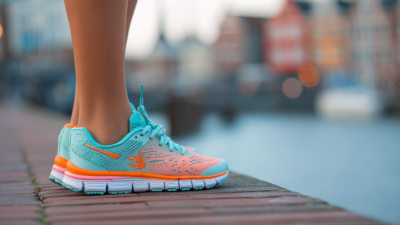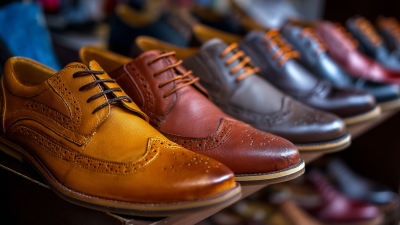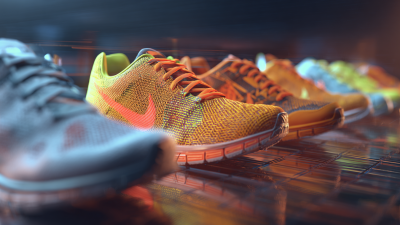
In recent years, the evolution of women sports shoes has been significantly influenced by advancements in lightweight technology, ultimately aiming to enhance athletic performance. According to a report by the Sports and Fitness Industry Association, women’s participation in sports has surged by 50% over the past decade, highlighting the growing demand for specialized footwear designed to cater to their unique needs. Lightweight materials such as engineered mesh and advanced foam have been at the forefront of this transformation, enabling brands to produce shoes that offer superior comfort without compromising on support. Furthermore, research indicates that a reduction in shoe weight by just 10% can lead to an increase in running efficiency by 1-2%, a crucial factor for competitive athletes and fitness enthusiasts alike. As the market continues to expand, understanding the impact of these innovations on women sports shoes will be essential for both manufacturers and consumers seeking optimal performance and injury prevention.

The evolution of lightweight materials in women's sports footwear has significantly transformed performance standards and comfort levels. In the early days, sports shoes were often made from heavy materials that hindered agility and speed. However, advancements in technology have led to the introduction of innovative materials like mesh fabrics, EVA foam, and thermoplastic polyurethane. These materials not only reduce the overall weight of the shoes but also enhance breathability and cushioning, allowing female athletes to perform at their peak.
The shift towards lightweight technology has also emphasized the importance of fit and support in women's footwear. Manufacturers are increasingly focusing on ergonomic designs that cater to the unique biomechanics of women's feet. For instance, the incorporation of dynamic lacing systems and flexible soles ensures that the shoes provide both stability and freedom of movement. This evolution not only boosts athletic performance but also fosters a greater sense of confidence among women athletes, encouraging more participation in various sports disciplines. As the industry continues to innovate, lightweight technology will undoubtedly play a crucial role in shaping the future of women's athletic footwear.
| Material | Weight (grams) | Breathability (g/m²) | Durability (cycles) | Impact Absorption (mm) |
|---|---|---|---|---|
| EVA Foam | 250 | 300 | 5000 | 20 |
| Flyknit | 230 | 350 | 4000 | 25 |
| Mesh | 210 | 400 | 3000 | 15 |
| Pebax | 240 | 320 | 6000 | 30 |
| Carbon Fiber | 220 | 280 | 7000 | 35 |
 Lightweight technology in women's sports shoes has become a game-changer, significantly enhancing athletic performance. According to a recent study published in the Journal of Sports Science, reducing shoe weight by even 10% can improve running efficiency by roughly 2%, translating into faster completion times during races. This gain is especially crucial for female athletes who often prioritize speed and agility in competitive scenarios. The incorporation of advanced materials, such as engineered mesh and lightweight foams, allows for superior breathability and comfort, empowering athletes to perform at their best.
Lightweight technology in women's sports shoes has become a game-changer, significantly enhancing athletic performance. According to a recent study published in the Journal of Sports Science, reducing shoe weight by even 10% can improve running efficiency by roughly 2%, translating into faster completion times during races. This gain is especially crucial for female athletes who often prioritize speed and agility in competitive scenarios. The incorporation of advanced materials, such as engineered mesh and lightweight foams, allows for superior breathability and comfort, empowering athletes to perform at their best.
Moreover, the integration of lightweight technology is not merely about weight reduction; it also focuses on optimizing performance through enhanced energy return and responsiveness. A report from the International Journal of Sports Biomechanics emphasizes that shoes designed with responsive cushioning can improve the energy return by approximately 30%, allowing athletes to conserve energy over long distances. As more brands innovate by focusing on these key benefits, it becomes evident that lightweight technology is not just a trend but an essential factor in achieving optimal performance in women's sports footwear.
Lightweight technology in women's sports shoes has become a game-changer, contributing to enhanced performance across various athletic activities. According to a recent report by the Sports and Fitness Industry Association, lightweight running shoes have seen a 20% increase in popularity among female athletes over the past two years. This surge is attributed to advancements such as engineered mesh uppers and responsive cushioning, which significantly contribute to a lighter overall shoe weight without compromising support and durability.
Among the leading innovations, materials like EVA (ethylene vinyl acetate) foam and Flyknit technology are transforming how athletes engage with their footwear. EVA foam provides superior shock absorption while remaining lightweight, allowing for improved agility and speed. Similarly, Flyknit technology, implemented by several top brands, offers a sock-like fit that molds to the wearer’s foot, promoting natural movement. Data from a 2022 analysis by the International Journal of Sports Science notes that athletes using lightweight shoes report a 10% increase in running efficiency, showcasing the direct impact of these technologies on performance. This evolution in women's sports footwear not only enhances functionality but also represents a significant shift towards prioritizing comfort and performance in athletic design.
When selecting the right lightweight sports shoes for women, it’s essential to prioritize fit and comfort. A well-fitted shoe should hug your foot snugly without causing discomfort. Consider trying on shoes later in the day when your feet are slightly swollen, ensuring the fit remains optimal during workouts. Additionally, observe the shoe's weight; a lighter shoe can enhance agility and reduce fatigue, making it crucial for performance in activities like running or aerobics.
Another important factor is the material and construction of the shoe. Look for breathable fabrics that promote airflow and wick away moisture, keeping your feet dry and comfortable. Flexibility and cushioning are also vital; a shoe that offers adequate shock absorption can help prevent injuries while providing support during dynamic movements. Finally, it's wise to consider your specific sport or activity when choosing shoes, as certain designs cater better to various types of movement, ensuring you get the most out of your performance.
The future of women's sports shoes is gravitating towards innovations in lightweight technology, as recent studies reveal a significant preference among female athletes for gear that enhances performance without the burden of excessive weight. According to the Market Research Future report, the global athletic footwear market is expected to grow at a CAGR of 5.9% through 2025, driven in part by advancements in materials that provide superior comfort and support. Innovations such as advanced knit fabrics and responsive cushioning systems are now being prioritized, enabling manufacturers to create shoes that weigh less than 200 grams while maintaining essential stability.

Moreover, emerging technologies like 3D printing and eco-friendly materials are reshaping the landscape of lightweight footwear. The use of breathable mesh fabrics not only reduces weight but enhances moisture management, directly corresponding with improved athletic performance. A report from Statista indicates that around 48% of female consumers prioritize lightweight options in their sports footwear, underscoring a shift in market dynamics. As sustainable practices become integral to production processes, brands are expected to deliver high-performance, lightweight shoes that cater specifically to the needs of female athletes, thus paving the way for a new era in sports footwear.






